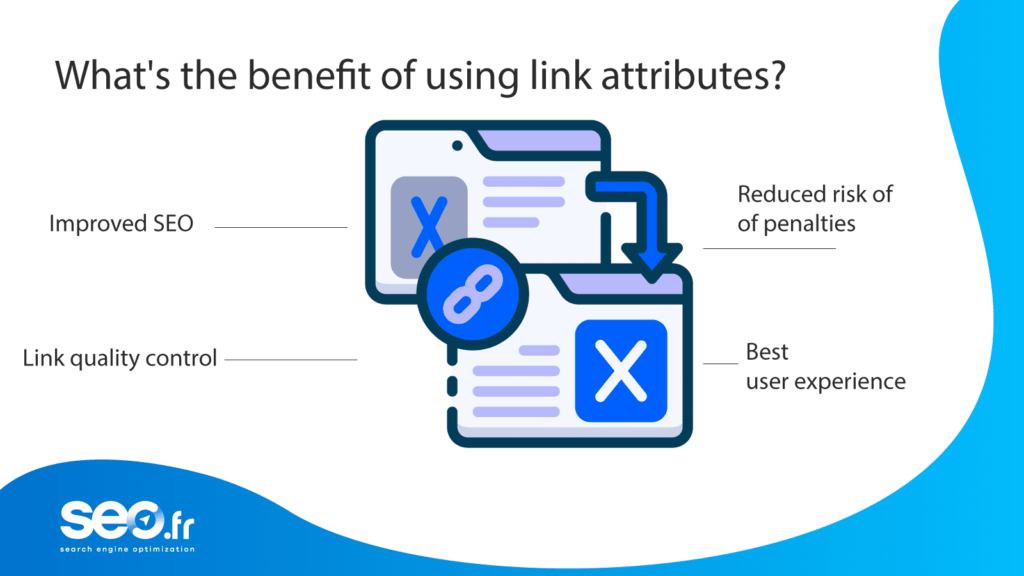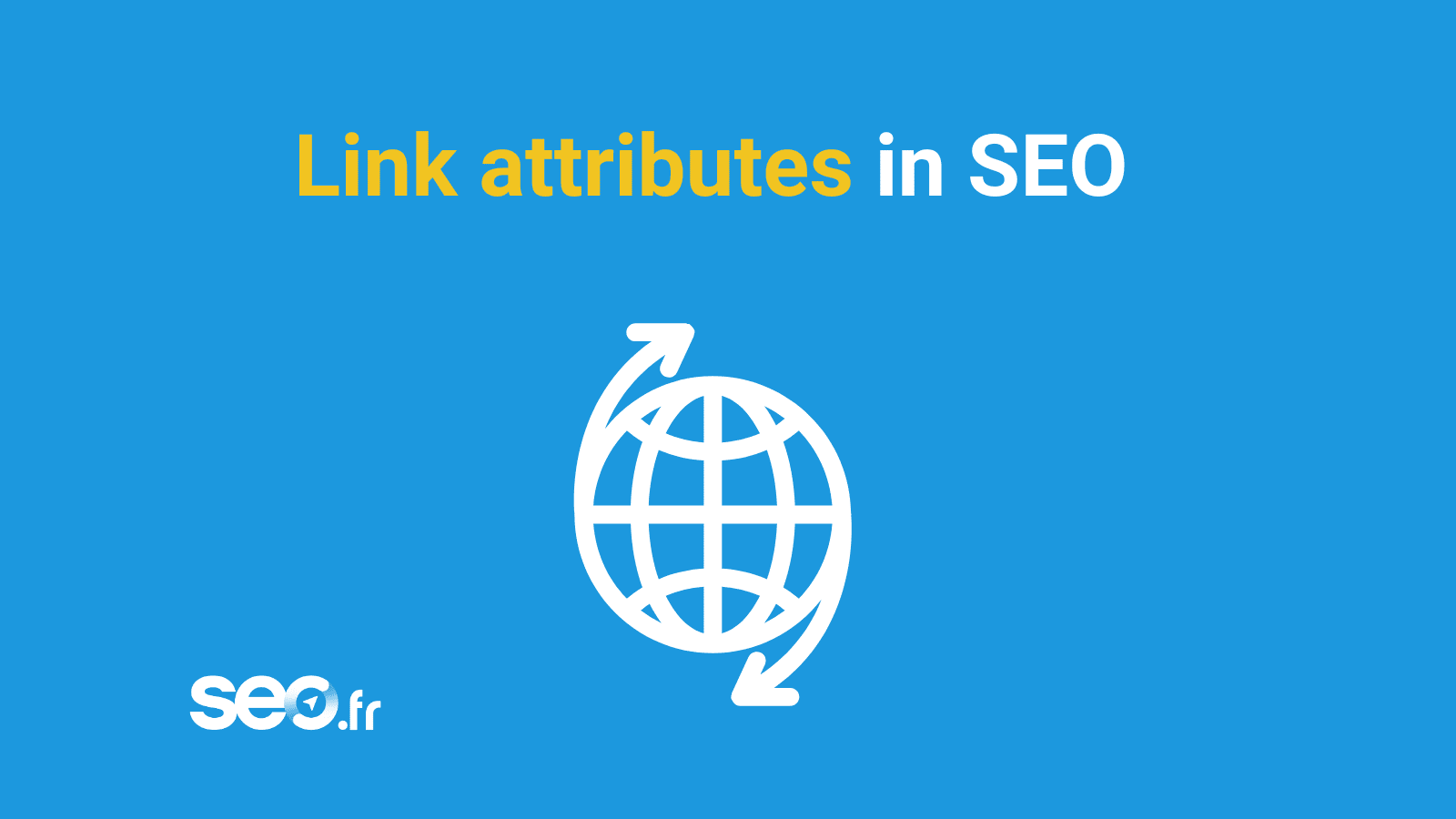Having quality content and obtaining backlinks is one of the essential actions for a site’s SEO. In SEO, a quality incoming link can increase your popularity. Similarly, a bad link can penalize your site in the search results. That’s why it’s important to remember that not all links are the same. Some are more relevant than others.
How can you recognize them and, more importantly, enable search engines to distinguish between them? Thanks to the dofollow and nofollow attributes, you can define the link and its value in the <a href=> tag. In this way, you suggest to the algorithm how it should explore, index and rank the destination page.
But what impact does all this have on your site’s SEO? Do you want to understand and use HTML attributes? Do you want to implement an effective link building strategy and improve your site’s reputation? Discover our article on how to build a link and optimize SEO.

What is a Dofollow link?
Hypertext used to link different types of information, the link is presented as a network of nodes in which Internet users can access data and browse freely. It links two websites on the same theme, or two pages.

A dofollow link is when an HTML attribute is used to indicate to the Googlebot that it is authorized to follow a specific backlink. Google’s algorithm then takes this type of link into account and transmits the link juice to the destination page. In other words, it’s a positive sign that sends some of the popularity of one site to another.
As a general rule, when the inbound links pointing to your site are of good quality, you get a good trust flow. This means that your site is reliable. Google search engines use the PageRank algorithm to define the popularity of a web page. The more authority your site has, the more prominence you get in the search results.
In short, with dofollow attributes, you :
- Authorize indexing of a web page
- Notify you that a page is trusted
- Increase the popularity of a website and generate traffic
What is a nofollow link?
This is a type of link with an attribute in the HTML code that is used to tell search engines not to follow a hyperlink. Usually the webmaster or SEO expert inserts nofollow links on the content of a web page. This excludes crawling and referencing. They can add them manually using a piece of code in the HTML editor or by installing a nofollow plugin on a website’s CMS.

This allows Google to read the code and know that these are backlinks that it should not follow. Unlike dofollow, nofollow does not transfer any link juice. As a result, it cannot generate authority on a web page.
In addition to nofollow tags, in September 2019 Google is making changes to the way it detects links. Why? Well before the inclusion of new values, the rel nofollow attribute was used as much for sponsored links as for hypertext that the site publisher did not wish to value.
Thanks to these changes, the site editor can now specify the links. They can even define their nature by describing the types of hypertext available on their site. So what are the new attributes that need to be taken into account now?
Including new values: what is the rel sponsored link?
With the sponsored tag, Google now allows us to indicate a hypertext link that implies a commercial transaction. When and how should this be implemented? When you include a sponsored link or an advertisement, it is essential to use this attribute to make it clear to search engines that you are using unnatural links. Generally, users will find your sponsored link when they type in the keyword you are targeting in your advert.
By marking sponsored links, you avoid penalties. You can use rel=”sponsored” or by default rel=”nofollow” to mark this type of hypertext link. For greater precision, choose the first option.
Google’s new tags: what you need to remember about the rel= UGC attribute
Used to indicate user-generated links, the rel=ugc attribute is content found in user comments on a blog or in messages on a forum.
In marketing, particularly e-commerce, ugc links are used to :
- Strengthen customer confidence and loyalty
- Confirm brand authenticity
- Strengthen commitment
- Increase brand visibility and reputation on the web
- Increase sales
Got an SEO question?
Julia can help
7 years’ expertise in SEO

What impact do link attributes have on SEO?
As you know, referencing a site requires a number of actions. Among other things, it involves creating and writing content, creating good internal and external links, offering a good user experience and ensuring the quality of the link you build between your pages and those of others.
When it comes to creating links to other pages or to our own site, we need to take attributes into account. Tags allow search engines to know how to treat a link and the content of the page to which it refers.
Whether you use link building or buying links to increase the authority of your website pages, look for quality. If the backlinks to your pages come from sites that rank well in the search results, your site will gain in popularity. You improve your site’s SEO and generate more traffic.
To do this, use the dofollow attribute. It allows robots to follow links and take them into account in indexing. If you want to get more clicks and maximize the amount of authority that a link transfers, make sure that it is well-placed. Which redirections for backlinks? You can use links in the body of the site to send your visitors to a :
- Home page
- Landing page
- Your blog posts
As far as rel nofollow, rel sponsored and ugc links are concerned, they have no real impact on your SEO. They do, however, make hypertext links more precise and clarify their nature and value to the search engine. So, how do you recognize a good link for SEO purposes?
Key factors to take into account when determining the quality of the link
It is not easy to define with certainty how Google comes to measure the popularity and value of each link. However, SEO consultants agree on certain important criteria for establishing a good link in SEO. They are based on authority, relevance and anchor text. The nofollow and dofollow tags, placement and destination also count, of course.
The Google search engine looks for authority. It takes backlinks as points that a page receives to improve its popularity in order to deserve a good ranking. Measuring the authority of inbound links gives you an idea of their quality. You’ll know whether they come from an expired domain name or an authoritative domain. To do this, use tools such as Majestic SEO and Search Console.
Relevance is another important factor in defining quality inbound links. Links should be exchanged between pages on the same theme. In addition, the site on which the link is to be found must have a high profile.
Finally, the anchor text is an essential point for a hypertext link to a website. This small piece of clickable text that links to another page must briefly describe the subject of the destination page. Google uses the keywords in the anchor text to better understand the content of the reference page. It can therefore know which queries to rank its content for.
To create an important link for SEO, consider :
- Dofollow and nofollow tags
- Authority
- Relevance and reputation of the site on which the link is located
- Anchor text
- Where to place the link
- The destination page.









